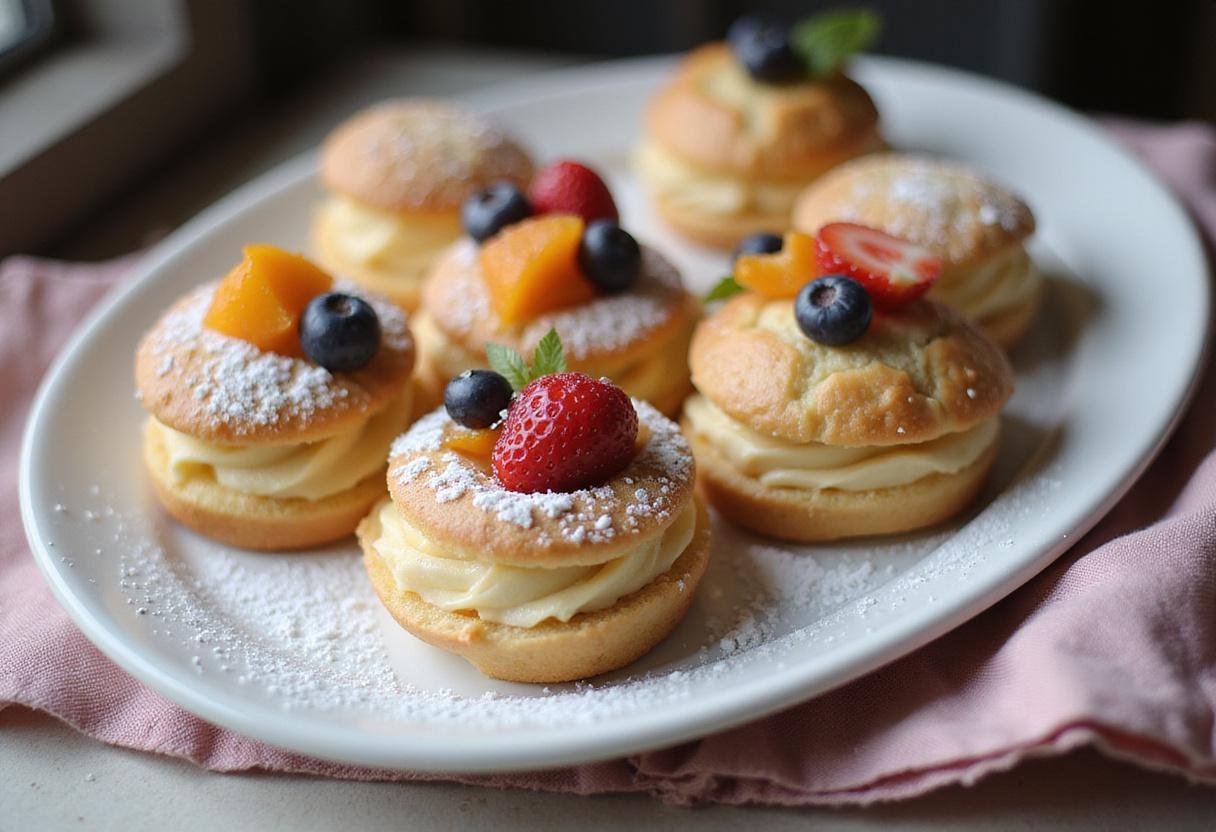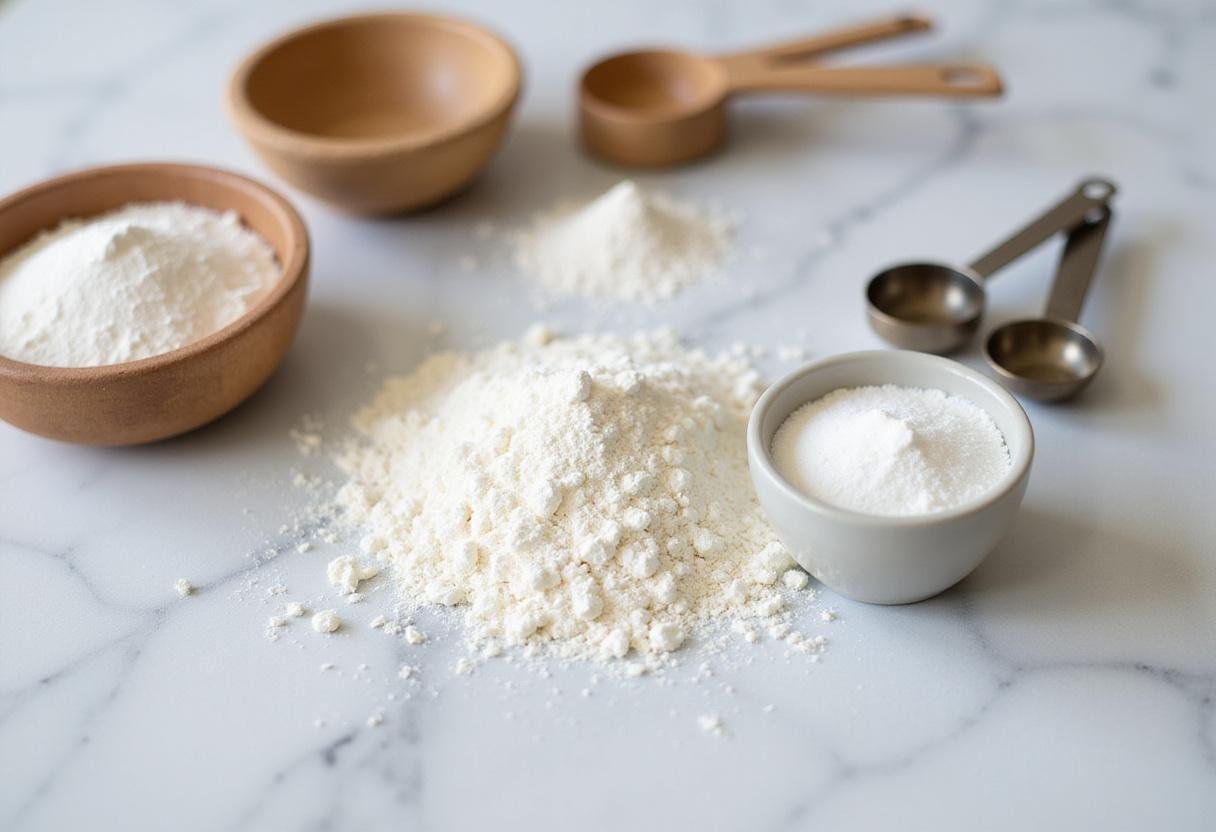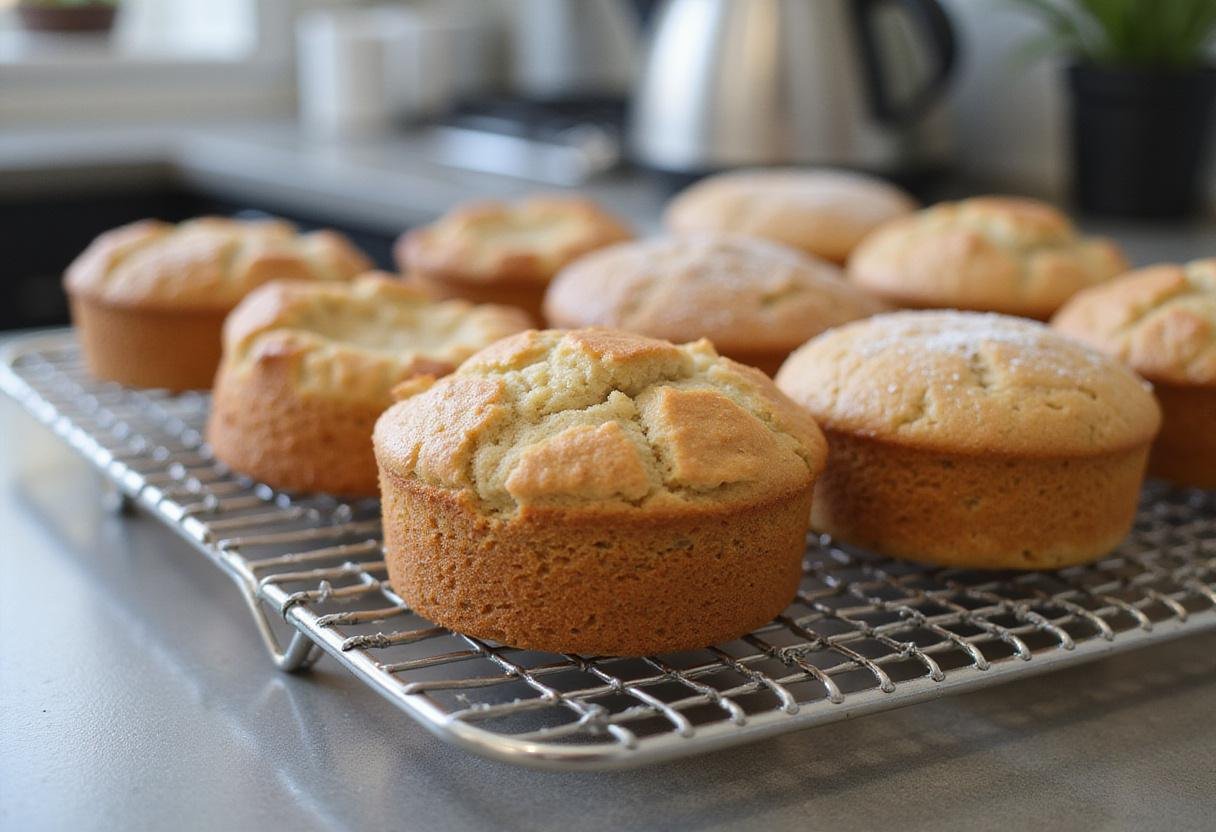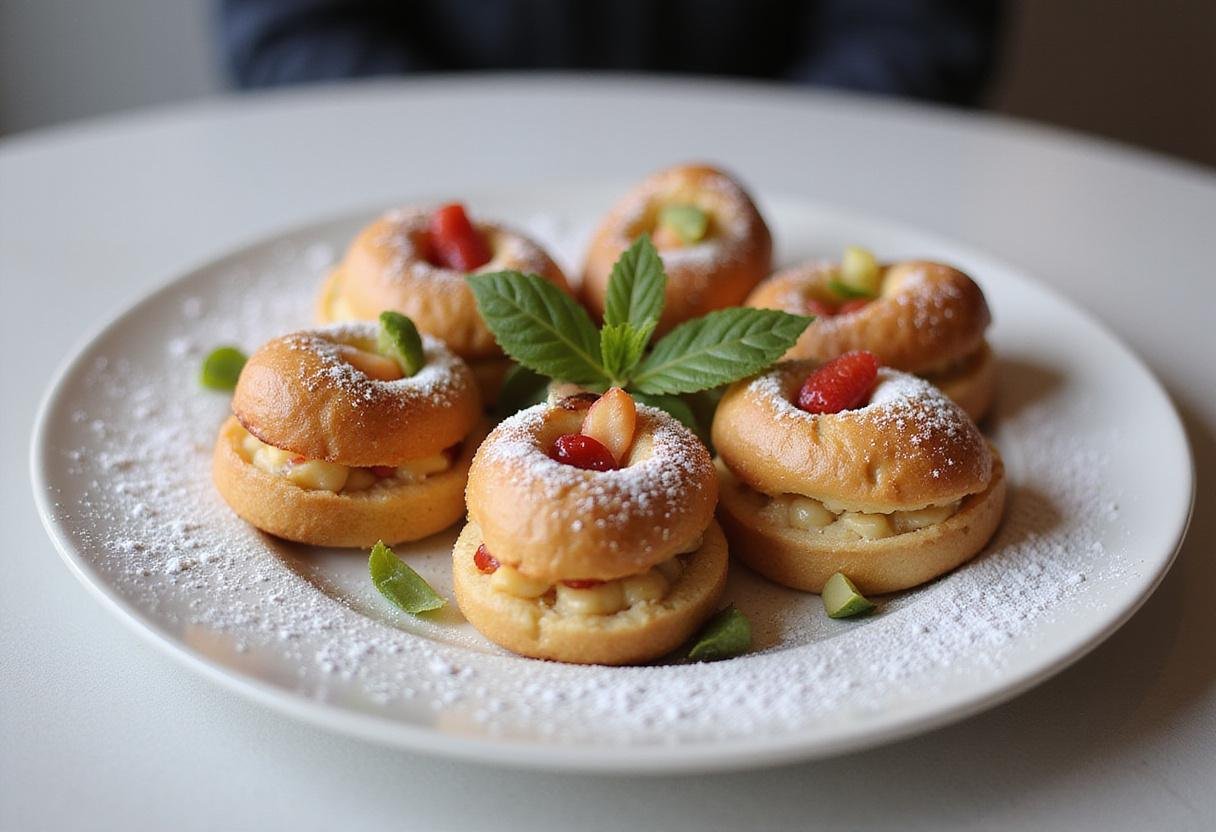Xanthan Gum’s Culinary Power: Discover the Magic Ingredient in Your Kitchen! 🍰✨
1. Introduction

Xanthan gum is a remarkable ingredient that has revolutionized the way we cook and bake. As a thickening agent and stabilizer, xanthan gum uses in cooking span a wide range of culinary applications. But what is xanthan gum exactly? It’s a plant-derived polysaccharide, produced through fermentation, that enhances the texture and stability of foods. This article explores the culinary power of xanthan gum and provides you with essential tips on its uses in cooking and baking. Let’s delve into the wonders of this versatile ingredient and see how it can transform your favorite recipes.
Are you looking to add a creamy touch to your soups? Try using xanthan gum in recipes like Cucumber Avocado Soup or Roasted Carrot Soup for a silky smooth texture.
2. What is Xanthan Gum?

Xanthan gum is a natural thickener that originates from the fermentation of sugars by Xanthomonas campestris bacteria. Its ability to significantly improve the texture of dishes makes it a game-changer in both professional and home kitchens. From enhancing sauces to stabilizing emulsions, xanthan gum uses in cooking are virtually limitless, making it an essential ingredient for many recipes. You can find more detailed information about its properties and production on reputable sources like The Spruce Eats.
Understanding what is xanthan gum, it’s not just a thickener; it’s also a stabilizer, preventing separation of ingredients in dressings and sauces. Its versatility makes it an indispensable addition to modern culinary practices. Explore its potential in diverse dishes, from savory to sweet.
Consider using xanthan gum to enhance the consistency of your Edamame Salad dressing or to thicken your Blueberry Almond Smoothie for a more satisfying texture.
3. Blending with Dry Ingredients

When utilizing xanthan gum in your recipes, it is critical to mix it with other dry ingredients before incorporating any liquids. This step ensures an even distribution and prevents clumping. Whether you’re baking bread or preparing gluten-free cookies, understanding how to use xanthan gum effectively makes all the difference in achieving the perfect consistency. Its ability to bind and thicken makes it a must-have in your pantry! Proper blending also ensures that the xanthan gum hydrates correctly, maximizing its thickening capabilities.
This technique is particularly useful in gluten-free baking, where xanthan gum mimics the binding properties of gluten. By evenly distributing it among the dry ingredients, you create a more consistent and stable mixture.
Thinking of trying out a new gluten-free recipe? Use xanthan gum to improve the texture of your Roasted Brussels Sprouts with a balsamic glaze or to keep your Cauliflower Rice Stir Fry from becoming too watery.
4. Creating Smooth Batters

Xanthan gum plays a vital role in achieving silky textures in batters. By incorporating it with liquid ingredients, this magical gum helps bind moisture to dry elements, facilitating a smooth and consistent batter that won’t separate. When trying your hand at pancakes or muffins, a little xanthan gum can elevate your dishes to bakery-quality perfection. The result is a batter that not only looks better but also bakes more evenly.
For those experimenting with alternative flours, xanthan gum is especially helpful in providing the necessary structure. It holds the batter together, preventing it from becoming grainy or crumbly.
Consider using xanthan gum in the batter for your next batch of Turkey and Spinach Stuffed Shells or as a thickening agent for the sauce accompanying your Lemon Dill Salmon.
5. Enhancing Textures of Baked Goods

With its exceptional thickening properties, xanthan gum is a secret weapon for bakers looking to improve the quality of their goods. It prevents baked items from becoming too dry or crumbly, resulting in moist and delectable treats. Whether you are making cakes, cookies, or gluten-free alternatives, incorporating xanthan gum will help to achieve the perfect texture every time. Xanthan gum’s ability to retain moisture is key to achieving a tender crumb in baked goods.
Its influence extends to various types of baked goods, ensuring a consistent texture across different recipes. From light and airy cakes to chewy cookies, the addition of xanthan gum can significantly improve the overall baking experience.
Experiment with xanthan gum to enhance the texture of your Cashew Chicken Stir Fry sauce or to add a smoother consistency to your Cranberry Walnut Salad dressing.
6. Storage Tips
To maintain the quality and effectiveness of xanthan gum, store it in a cool, dry place away from direct sunlight. Proper storage ensures it retains its thickening capabilities for your cooking and baking adventures. Make sure to keep it in an airtight container to prevent moisture exposure, which can compromise its performance. This will also prevent it from absorbing odors from other ingredients, ensuring its purity for future use.
7. Serving Suggestions
Xanthan gum can be utilized in a plethora of dishes. Sprinkle it on soups to achieve a silky texture, add it to dressings for improved emulsion, or use it in desserts to enhance creaminess. The culinary power of xanthan gum knows no bounds, making it an amazing ingredient for any recipe. Consider using it in ice creams to prevent ice crystal formation or in sauces to maintain a glossy finish.
8. FAQs About Xanthan Gum
Q1: Is xanthan gum safe to consume?
A1: Yes, xanthan gum is generally recognized as safe (GRAS) by the FDA and is widely used in food products. Most individuals can consume it without any adverse effects; however, as with any ingredient, excessive consumption may lead to digestive discomfort in some.
Q2: Can I substitute xanthan gum with other thickeners?
A2: While you can use alternatives like cornstarch or guar gum, the results may not be the same in terms of texture and consistency. Each thickener has its unique properties, so it’s essential to consider the desired outcome when choosing a substitute. Xanthan gum offers exceptional versatility and stability compared to many others.
Q3: How much xanthan gum should I use in recipes?
A3: A little goes a long way! Typically, 1/4 to 1 teaspoon per cup of liquid is sufficient. Begin with a small amount and adjust to your liking. Overusing xanthan gum can result in a gummy or overly thick texture, so it’s best to start conservatively.
9. Conclusion
Incorporating xanthan gum into your cooking and baking can elevate your culinary creations, providing desirable textures and enhancing flavors significantly. Understanding xanthan gum uses in cooking gives you the confidence to experiment and produce impressive dishes. So, next time you’re in the kitchen, reach for this incredible thickening agent and let its culinary power transform your meals!
Print
Xanthan Gum’s Culinary Power
Unlock the culinary power of xanthan gum, a versatile agent that enhances texture and stability in cooking and baking. Discover essential tips and uses to transform your kitchen creations with this remarkable thickener.
- Total Time: 5 minutes
- Yield: Varies based on recipe
Ingredients
- Xanthan gum
- Other dry ingredients (as per recipe)
- Liquid ingredients (as per recipe)
Instructions
- Mix xanthan gum with other dry ingredients before adding liquids to prevent clumping.
- Incorporate xanthan gum with liquid ingredients to create a smooth batter.
- Use xanthan gum to enhance the texture of baked goods by preventing dryness and crumbly results.
- Store xanthan gum in an airtight container in a cool, dry place.
- Experiment in various dishes including soups, dressings, and desserts.
Notes
- Xanthan gum is safe for consumption and considered a GRAS substance by the FDA.
- Alternative thickeners like cornstarch can be used, but may yield different results.
- Start with 1/4 to 1 teaspoon of xanthan gum per cup of liquid and adjust according to preference.
- Prep Time: 5 minutes
- Cook Time: 0 minutes
- Category: Ingredient Guide
- Method: Mixing
- Cuisine: International
- Diet: Gluten-Free
Nutrition
- Serving Size: 1 tsp
- Calories: 7 Kcal
- Sugar: 0g
- Sodium: 0mg
- Fat: 0g
- Saturated Fat: 0g
- Unsaturated Fat: 0g
- Trans Fat: 0g
- Carbohydrates: 1.5g
- Fiber: 0g
- Protein: 0g
- Cholesterol: 0mg

